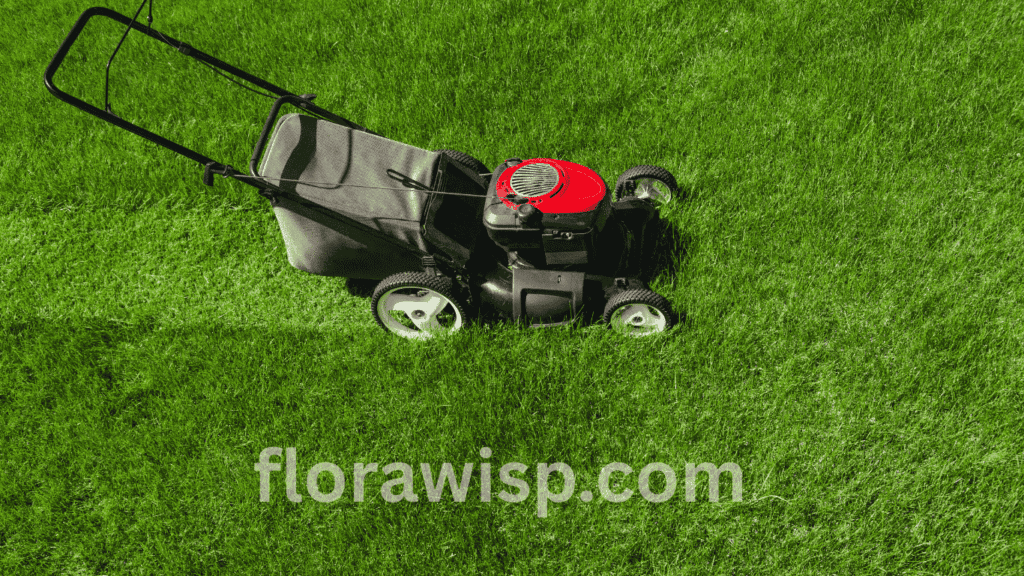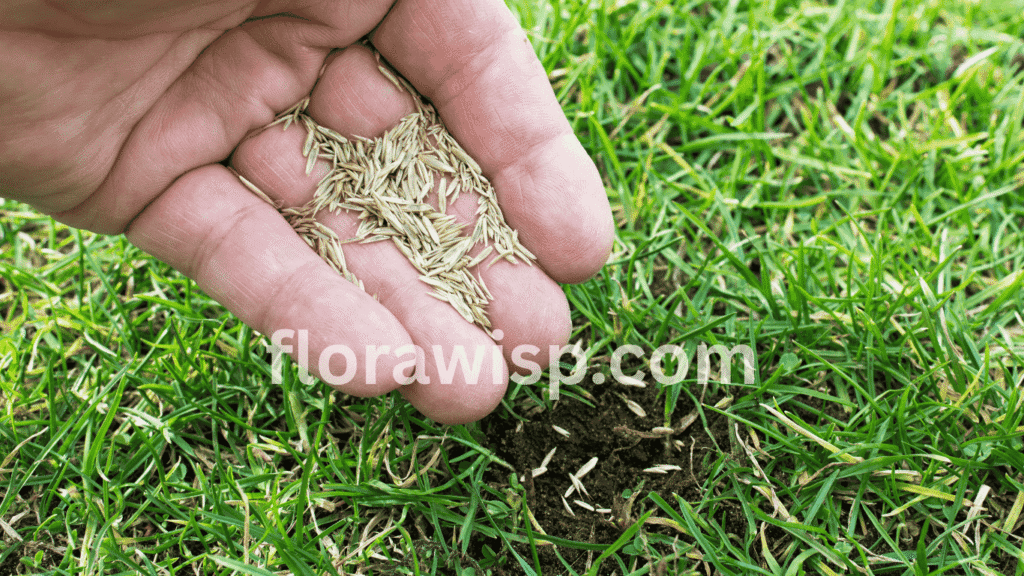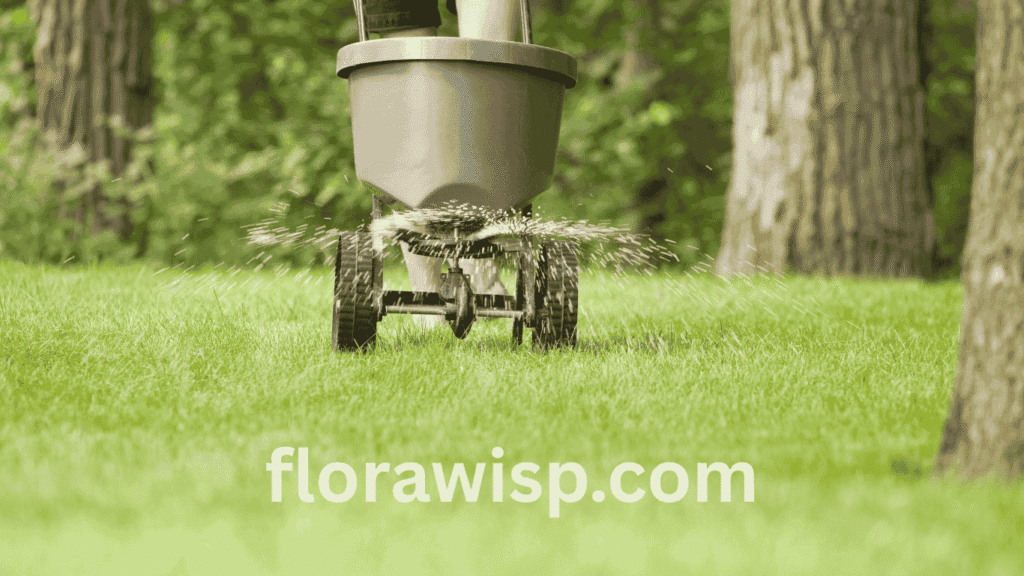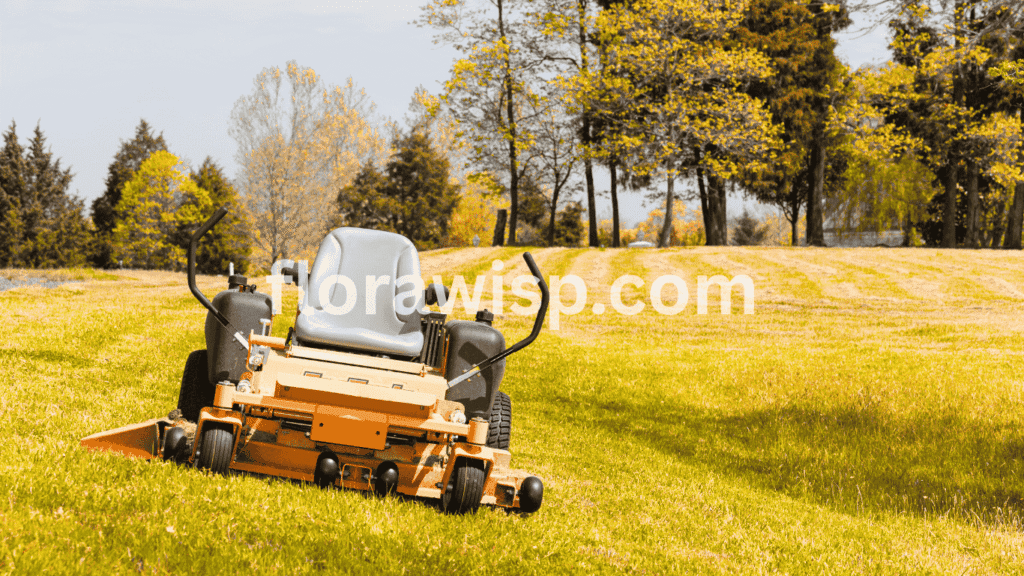Discover how to grow and maintain St Augustine grass Florida with expert tips on fertilizing, watering, and seasonal care. Ever wonder why some Florida lawns stay lush while others struggle year-round? The answer often lies in one key choice: St Augustine grass Florida, With thick blades, salt tolerance, and heat resistance, this turf thrives in Florida’s climate. I’ve helped homeowners from the Keys to the Panhandle turn patchy yards into showpieces. The secret isn’t just planting it’s knowing the grass’s rhythm and timing your care. Whether you’re dealing with sandy soils or deep shade, there’s a cultivar that fits. For broader growing tips, see how we approach St. Augustine grass in Texas.
In This Article
In this guide, I’ll share what’s worked across Florida yards, including proven fertilizer schedules, mowing habits, and pest defenses. By the end, you’ll know exactly how to make your St. Augustine lawn not just survive but truly thrive.
St Augustine Grass Florida: Why It’s the #1 Choice
St. Augustine grass Florida isn’t just popular, it’s practical. Known for its broad blades, rich green color, and adaptability to Florida’s unique climate, this turfgrass handles heat, humidity, and even occasional salt exposure. As a long-time lawn care consultant in Central and South Florida, I’ve seen homeowners switch to St. Augustine grass because of its reliability and ease of upkeep. Floratam, the most common variety, thrives in full sun and handles Florida’s weather extremes like a champ. Whether you’re in Miami, Orlando, or the Panhandle, this grass stands up well against pests and drought. Its carpet-like coverage also crowds out many common weeds, saving you time and effort.
Just like other warm-season grasses such as Bermuda grass and Centipede grass in Georgia, St. Augustine performs best when matched with proper care. It requires a specific watering and fertilization routine, and while it’s drought-tolerant, it won’t tolerate neglect. The thatch layer can build up quickly if you’re not mowing properly, and chinch bugs love it too much. Still, with the right care plan, St. Augustine grass in Florida remains the gold standard for warm-season lawns.
St Augustine Grass Care Florida
Caring for St Augustine grass Florida goes beyond textbook advice; it’s about establishing a rhythm that fits your local conditions. Here’s how I help homeowners develop a lawn that thrives despite the heat, humidity, and unpredictable rain cycles. Along the way, I also guide them through common St Augustine grass problems that can affect growth and appearance year-round.
Mowing for Health and Resilience

Keep your mowing height at 3.5 to 4 inches. It may seem high, but that extra height shades the soil, reduces water evaporation, and protects against sunscald. In spring and summer, expect to mow every 5–7 days. Come fall, you can shift to every two weeks. I always tell clients to sharpen their mower blades at least once per season; dull blades tear rather than cut and lead to browning.
Smart Watering Techniques
Overwatering is one of the top reasons I get SOS calls. St. Augustine doesn’t like soggy roots. I recommend using a rain gauge and setting sprinklers to run early between 5 a.m. and 8 a.m. no more than 2–3 times per week depending on rainfall. Target about one inch of water weekly.
A quick field trick I use: press a screwdriver into the lawn. If it goes in smoothly, you’re watering just right.
Targeted Pest and Disease Management
Florida lawns are bug magnets. Chinch bugs especially love the warmth and thatch of St. Augustine. I make it a habit to walk lawns weekly, looking for irregular yellow patches and an early chinch sign. Spot-treat with insecticides, don’t blanket-spray. The same goes for brown patches and gray leaf spots. If you catch them early, fungicides work well, but you’ve got to keep moisture in check too.
Soil and Root Care
Every spring, I topdress with compost. It feeds the soil biology and improves water retention. This is a game-changer for lawns in sandy Florida soils. I also detach annually using a power rake. Without it, that thick thatch layer chokes roots and prevents fertilizer from getting where it needs to go. Think of dethatching as a spring cleaning for your lawn.
Seasonal Feeding Strategy
A well-fed lawn resists stress better. I stick to a seasonal fertilizer schedule, focusing on slow-release blends to avoid surge growth. During peak summer, I lean into organic supplements like seaweed extract or fish emulsion, especially if the lawn is under drought stress. It keeps color and vigor without pushing excessive blade growth.
The Consistency Rule
More than any product or secret formula, consistency is what separates struggling lawns from stunning ones. St Augustine grass lorida doesn’t demand perfection but it does demand regular care. Mow, water, inspect, feed, repeat. Miss that rhythm, and the grass tells you fast.
I’ve helped homeowners turn failing lawns around with just three months of disciplined care. The formula isn’t flashy, it’s practical, proven, and Florida-tested.
5 Common Types of St Augustine Grass Florida
St Augustine grass Florida comes in several varieties, each suited to different conditions in Florida. Choosing the right one depends on your lawn’s sun exposure, soil type, and how much traffic it gets.
Floratam: This is the top performer in full sun. It’s fast-growing, thick-bladed, and spreads aggressively. I often recommend it for large, sunny front yards or backyards without tree cover. Its vigor makes it great at resisting weeds, but it doesn’t do well in shade.
Palmetto: A favorite for shady spots, this cultivar has a soft texture and a bit more cold tolerance than Floratam. It’s slower-growing, which means less mowing, but it still maintains a dense appearance. Ideal under mature oaks or near buildings.
Seville: With its fine blades and compact growth, Seville is my go-to for tight spaces like side yards or around patios. It tolerates moderate shade and stays neat with less maintenance. It’s more sensitive to overwatering, so drainage is key.
Raleigh: Best suited for northern Florida zones, Raleigh handles cooler temps better than most. However, it does require more frequent dethatching and can be prone to brown patch disease in humid conditions. I’ve had success with it in Gainesville lawns where winter’s bite harder.
Bitterblue: This older cultivar remains popular for its color and cold resilience. It grows slower but produces a thick, luxurious carpet. I’ve used Bitterblue in yards with varied sun conditions, and it adapts well if you’re consistent with care.
Personally, Floratam remains my favorite. It’s aggressive enough to fill in bare spots fast and responds well to structured care. As long as your lawn gets 6+ hours of sunlight, it’s a solid, forgiving choice that makes your maintenance efforts pay off.
Is Seeding St Augustine Grass Worth It?

Seeding St Augustine grass Florida is not only uncommon, it’s impractical. This grass doesn’t produce viable seeds reliably, which is why sod, plugs, or sprigs are the only real options.
Sod is your fastest path to a uniform lawn. I’ve installed it in dozens of properties where erosion or patchy lawns needed an instant fix. Plugs work if you’re on a budget, but they demand patience and diligent watering.
If you must reseed, double-check if what you bought is truly viable. Most often, homeowners are misled by mislabeled seed bags.
Instead, focus on soil prep. Clear weeds, level the surface, and lay down plugs or sprigs in spring or early summer when temps are ideal. Apply a starter fertilizer and water daily until established. With Florida’s warm conditions, growth can fill in nicely within 6–8 weeks.
St Augustine Grass Fertilizer Schedule for Florida Lawns
Getting the fertilizer schedule right is the backbone of consistent lawn color and resilience. I follow this proven seasonal calendar for St. Augustine grass Florida:
| Time of Year | Fertilizer Type | Tips |
| March – April | Balanced (16 Nitrogen (N), 4 Phosphorus (P), 8 Potassium (K)) | Apply after the last frost to kickstart spring growth. Water lightly. |
| May – June | Nitrogen-rich (e.g., 24 Nitrogen (N), 0 Phosphorus (P),11 Potassium (K)) | Encourages lush green blades. Watch for signs of thatch buildup. |
| July – August | Slow-release or organic | Helps maintain color and growth without overstressing the lawn. |
| September – October | Low nitrogen, high potassium (e.g., 8 Nitrogen (N), 10 Phosphorus (P), 20 Potassium (K)) | Boosts root strength and cold resistance. Winterizer blends are ideal. |
I always water in fertilizer immediately after application early morning is best. Avoid applying if rain is forecast within 24 hours. Over the years, I’ve seen too many homeowners burn their lawn or cause fungal outbreaks simply by skipping this step.
A soil test once a year is more than just smart, it’s essential. Florida’s diverse soils can vary even within neighborhoods. A quick test tells you where your pH stands and how to balance nutrients correctly. This small step can make a massive difference in how your lawn absorbs and benefits from your fertilization efforts.
If your lawn starts yellowing or looks stressed after fertilizing, don’t panic. It’s often a sign of over-application or heat stress. In those cases, I flush the soil gently with water over the next few days and pause any further feeding until the lawn recovers.
Best Time to Water St Augustine Grass Florida

Early morning, between 4 a.m. and 9 a.m., is the ideal window to water St Augustine grass in Florida. It allows the turf to absorb moisture before the sun evaporates it and reduces the risk of fungal issues that thrive in overnight moisture.
If it’s been dry, increase the watering frequency to 2–3 times a week. Each session should deliver about half an inch of water. Use a tuna can as a simple gauge once it’s half full, your lawn has enough.
Avoid watering in the evening. That moisture just sits and invites disease. I’ve seen entire lawns go patchy from summer fungus due to poor timing.
For new sod, water daily for 2 weeks, then taper off. Established lawns need less frequent but deeper watering. This encourages roots to grow down, not stay shallow.
Fall Fertilizing for St Augustine Grass Florida

As Florida cools down in late September and October, it’s time to shift focus to fall fertilization. Use a product with low nitrogen and higher potassium, such as a 10-0-20 mix. This builds root strength for winter.
Avoid high-nitrogen products in fall; they force top growth just as the grass is slowing down, making it vulnerable to disease and cold snaps.
I recommend applying fall fertilizer once, around mid-October. Pair it with a soil pH check your grass performs best around 6.0–6.5.
Don’t forget to rake leaves and reduce mowing height slightly. These small actions prevent thatch and promote airflow, both essential as the lawn transitions into dormancy.
Done right, fall prep means fewer weeds, greener spring color, and less winter stress.
Pre-Emergent for St Augustine Grass Florida
Pre-emergent herbicides are critical if you want to keep crabgrass and goosegrass at bay in Florida lawns. For St Augustine grass Florida, choose products containing dithiopyr or atrazine; they’re turf-safe when applied correctly.
Apply in early February for spring weeds and late September for winter ones. Timing matters more than product. If you’re late, weeds win.
Don’t overseed or plug too close to application time; most pre-emergents can block grass roots, not just weeds. Always read the label.
Personally, I favor liquid formulas for spot control and granular for full-lawn application. Water it lightly post-application. And never apply during heat waves or right after fertilizing that combo can burn your turf.
What to Do If Your St Augustine Grass Turns Yellow After Fertilizing

Yellowing after fertilizing usually means one of three things: over-application, iron deficiency, or improper watering.
Start by checking your fertilizer type. If it’s too nitrogen-heavy or applied in midday heat, it can scorch the grass. Iron chlorosis is also common, especially in high-pH soils. A foliar iron spray can green things up fast. I’ve used chelated iron to bring back entire lawns in just days.
Finally, water smartly. Fertilizer should be watered within 24 hours, wait too long, and you risk burn. If your grass stays yellow after correcting these issues, do a soil test. Sometimes the answer is in the PH.
FAQs
Q. Is St. Augustine grass native to Florida?
Yes, St. Augustine grass is native to the Gulf Coast, including Florida. It thrives naturally in the region’s warm, humid conditions. I’ve seen it flourish even in coastal properties where salt tolerance is a must. It’s one reason it remains the top turf choice for Florida homeowners seeking low-maintenance greenery.
Q. How often do you water St. Augustine grass in Florida?
Water St. Augustine grass in Florida about 2 to 3 times per week depending on rainfall. Each session should deliver 0.5–1 inch of water. In my practice, I suggest homeowners use a rain gauge or smart controller to fine-tune their irrigation. Shallow, daily watering leads to weak roots, so always go for deep, infrequent sessions.
Q. When to fertilize St. Augustine grass in Central Florida?
Fertilize St. Augustine grass in Central Florida starting in mid-March and continue every 6–8 weeks until early October. This schedule aligns with the region’s warm season. Based on soil tests I conduct, adjusting the mix slightly between spring and fall helps reduce disease risk and enhances resilience.
Q. What’s the best winter fertilizer for St. Augustine grass?
Use a winter fertilizer with low nitrogen and high potassium in late October or early November. This encourages root growth without pushing unnecessary blade growth. I’ve found that lawns treated with 10-0-20 blends bounce back faster in spring and resist cold-weather browning much better.
Final Thoughts
St Augustine grass Florida may be tough, but it still needs steady care to stay green and healthy. The key is consistency watering on schedule, using the right fertilizer, and watching for early signs like yellowing blades or patchy spots. Most lawn problems start with overlooked basics like poor soil or timing. Remember, great lawns don’t happen overnight. The most stunning St. Augustine yards I’ve come across were built season by season, with a mix of patience, smart planning, and routine maintenance. Stick to a seasonal care plan, stay alert to your lawn’s needs, and you’ll have a yard that stands out in any Florida neighborhood.
Don’t miss our complete guide on St Augustine Grass it covers everything from planting tips to solving common problems, tailored for both Florida and beyond.
Sources:
Clemson University Extension – St. Augustinegrass Yearly Maintenance Program
University of Florida IFAS – Cultivar Profiles
Sod Solutions – Types of St. Augustine Grass in Florida
Gardener, M.Sc. Horticulture
Elara Bennet is a gardening writer from Austin, TX, passionate about sustainable lawns and blooms. Read full bio →








